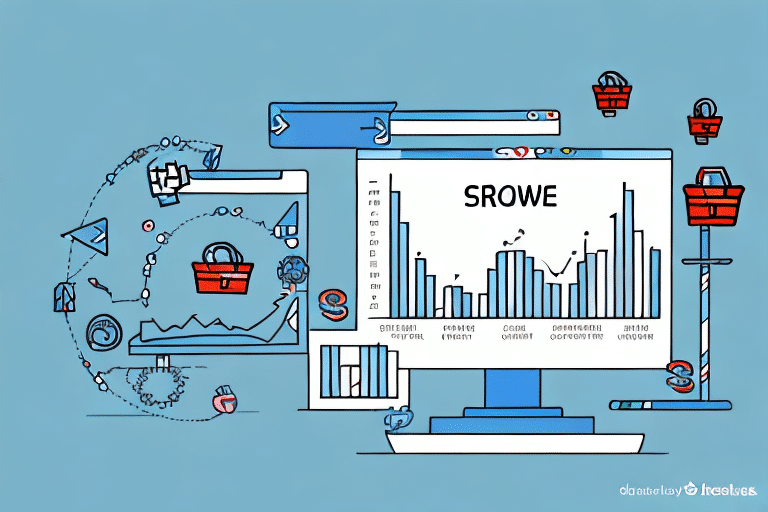The Importance of Customer Feedback in Ecommerce
As ecommerce businesses grow and scale, understanding the evolving needs of customers becomes paramount. Customer feedback serves as a vital tool in this endeavor, enabling businesses to foster a positive and sustainable ecommerce environment. Without actionable insights from customers, creating a tailored and effective ecommerce experience is nearly impossible.
Building Trust and Loyalty
Customer feedback not only highlights areas for improvement but also plays a crucial role in building trust and loyalty. When customers feel their opinions are valued and acted upon, they are more likely to remain loyal and advocate for the brand. According to a [2023 Harvard Business Review study](https://hbr.org/2023/01/the-value-of-customer-experience), companies that excel in customer experience have a 17% advantage in their markets.
Leveraging Customer Feedback to Scale Your Business
Scaling an ecommerce business effectively requires strategic use of customer feedback to identify growth opportunities and enhance the overall user experience.
Identifying Growth Opportunities
By analyzing feedback, businesses can uncover trends and patterns that inform product development and marketing strategies. For example, if multiple customers request more eco-friendly products, a business can expand its sustainable offerings to meet this demand.
Enhancing User Experience
Feedback about website navigation or checkout processes can lead to improvements that enhance user satisfaction. A [Shopify report](https://www.shopify.com/blog/customer-feedback) indicates that businesses optimizing their user experience based on feedback see a 20% increase in conversion rates.
Best Practices for Collecting and Utilizing Feedback
Implementing effective methods for collecting and utilizing customer feedback is essential for driving growth and improvement.
Effective Surveys and Feedback Forms
Designing targeted surveys and feedback forms helps gather specific insights about customer preferences and pain points. Tools like SurveyMonkey and Typeform facilitate the creation of comprehensive surveys tailored to business needs.
Monitoring Social Media and Online Reviews
Social media platforms and online review sites are treasure troves of unsolicited customer feedback. Regularly monitoring these channels allows businesses to address issues promptly and understand customer sentiment.
Tools and Strategies for Managing Customer Feedback
Utilizing the right tools and strategies can streamline the collection and analysis of customer feedback, making it easier to implement data-driven decisions.
Automated Feedback Collection Tools
Automated tools like Zendesk and HubSpot integrate customer feedback collection seamlessly into the ecommerce platform, ensuring timely and efficient data gathering.
Analyzing Feedback Data
Advanced analytics platforms, such as Tableau and Power BI, enable businesses to interpret feedback data effectively, turning raw data into actionable insights.
Case Studies: Brands Excelling with Customer Feedback
Several successful ecommerce brands have demonstrated the power of prioritizing and utilizing customer feedback in their scaling strategies.
Amazon
Amazon's customer-centric approach involves continuous collection and analysis of feedback to refine its services and product offerings, maintaining its position as a market leader.
Zappos
Zappos leverages customer feedback to enhance its user experience, leading to high levels of customer satisfaction and loyalty.
Common Pitfalls and Measuring ROI of Feedback Systems
While incorporating customer feedback is beneficial, businesses must navigate common pitfalls and effectively measure the return on investment (ROI) of their feedback systems.
Avoiding Common Pitfalls
- Overemphasis on Negative Feedback: Focus on trends rather than individual negative comments to maintain a balanced perspective.
- Delayed Responses: Timely addressing of feedback is crucial to prevent decreased customer satisfaction.
- Ignoring Feedback: Even if feedback isn't immediately actionable, acknowledging it demonstrates respect for customer opinions.
Measuring ROI of Feedback Systems
Evaluating the ROI involves tracking metrics such as customer retention rates, conversion rates, and customer lifetime value. For instance, businesses that implement effective feedback strategies can see up to a 25% increase in customer retention, as reported by a [Forrester Research study](https://www.forrester.com/research/customer-feedback-roi).
Conclusion
Customer feedback is integral to ecommerce success and scaling. By actively collecting, analyzing, and acting upon customer feedback, businesses can build trust, enhance user experiences, and drive sustainable growth. Implementing best practices and leveraging advanced tools ensures that feedback becomes a cornerstone of strategic decision-making, keeping businesses competitive in a dynamic market.




















